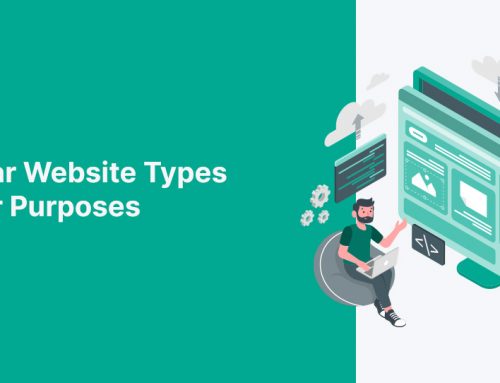If you’re about to enter the world of web design without any experience, don’t freak out just yet. You don’t need to be armed with a repository of coding skills and a design degree to match. The website gods won’t scorn you if you don’t know the difference between CSS and CMS, and you certainly don’t need to pause everything, right now, to build your website.
These things are useful, and certainly necessary for more seasoned developing methods, but they’re not your only option. After all, it’s 2019, we have a digital currency now, so it’s only fitting that we have more than one way to make a website. The route you go on depends on the goals and uses that you designate for your site, as well as the time and money that you’re willing to invest into making it. Decide on that first, then you can decide on one of these methods.
Wuilt
Fresh on the website building scene, Wuilt takes on the same code-free, inexpensive approach as traditional website builders, but solves the problem of time and design by automatically generating your website using just the content you provide.
This one’s built for those of you who don’t know a thing about what makes an aesthetic layout, or which complimentary colors go best together, or which colors are even complimentary. Mostly, this is built for those of you who simply don’t have the time to become fluent in web design.
Wuilt is perfect for businesses that are just starting out and don’t want to break the bank hiring professional designers (I mean, why would you spend thousands on your website if you’re not even sure if your business will be successful just yet?). The platform was built by a team of designers and developers who know how daunting website building can be, so they provide all the essentials for you – beautiful pages, important analytics and site responsiveness.
If you want to create a professional website in just a few minutes, then Wuilt is the place to go.
DIY Website Builders
This one’s for everyone who don’t speak HTML and doesn’t plan on learning the language anytime soon.
DIY website builders come with the backend code, so all you have to do is focus on the visual experience. These are platforms such as SquareSpace, Wix and Weebly. They offer hundreds of templates for you to choose from, and let you edit them by dragging and dropping the features you want on your site, including galleries, videos and text boxes. They cost less than outsourcing the work to a professional, and are definitely easier to use than some other options.
However, that is not to say that they’re all play and no work – while the templates are all aesthetically pleasing, it can be hard to navigate the drag-and-drop field with limited experience. Learning the layout of the builder you choose can take time, and the torrent of available options can be overwhelming. It’s way too easy to mess up all your hard work in seconds. And it’s extremely difficult to get customer support on the phone to help fix it.
Creating with raw code
If you open up any website and click on view source, you’ll find a stream of numbers, letters and symbols. If this image doesn’t have you reaching for the nearest bottle of Advil, then creating your website from scratch might be a fit for you.
Using multiple HTML pages is the traditional website recipe. It’s beneficial for design and integration freedom. In this case, the website is wholly and completely yours, so you can do whatever you want to it. Plus, with HTML editors such as Adobe Dreamweaver and KompoZer, the internet can help you out when you’re stuck.
Unfortunately, if you don’t have a basic coding background, you’re better off hiring a designer, which can be costly. The average prices range from $40 to $120+ an hour.
Content Management Systems
A Content Management System (CMS) is a collaborative platform that manages multiple web pages at once.
With a CMS, you can create your own custom website, or pick a theme from places such as Theme Forest. Examples of a CMS include WordPress, Jumia and Drupal.
One issue with a CMS is that it can seem like you’re navigating through a foreign country. Even installing a theme, which is supposed to be the simplest part, can be laborious. Expect to dedicate at least a few weeks or more to building your site. Also, make sure you don’t forswear all your technical prowess – you’ll certainly be needing it.
Takeaway:
- Anyone can make a website
- One option is Wuilt, which only requires your business information to automatically create a well-designed website
- DIY builders utilize drag and drops but can leave you with poorly a designed website
- Using raw code to build your website can be effective but requires hefty experience
- A CMS lets you create off of a template or from scratch, but takes time, energy and effort

![10 Reasons Why Your Startup Will Mostly Fail [case studies]](https://25457140.fs1.hubspotusercontent-eu1.net/hub/25457140/hubfs/Imported_Blog_Media/24-10-Reasons-Why-Your-Startup-Will-Mostly-Fail-Header-500x383-Oct-02-2023-10-58-06-4774-AM.jpg?width=500&height=383&name=24-10-Reasons-Why-Your-Startup-Will-Mostly-Fail-Header-500x383-Oct-02-2023-10-58-06-4774-AM.jpg)

![How to Make Your Wuilt Website [with Steps]](https://25457140.fs1.hubspotusercontent-eu1.net/hub/25457140/hubfs/Imported_Blog_Media/37-En-header-500x383-Oct-02-2023-10-57-54-4143-AM.jpg?width=500&height=383&name=37-En-header-500x383-Oct-02-2023-10-57-54-4143-AM.jpg)




Leave A Comment